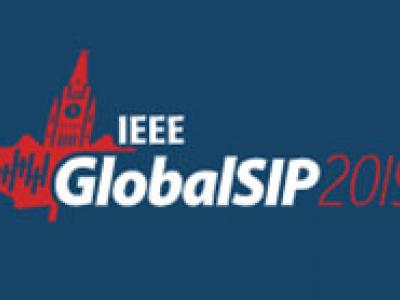- Communication and Sensing aspects of Sensor Networks, Wireless and Ad-Hoc Networks
- Communication Systems and Applications
- MIMO Communications and Signal Processing
- Signal Transmission and Reception

- Read more about Learning Bollobás-Riordan Graphs Under Partial Observability - Poster
- Log in to post comments
This work examines the problem of learning the topology of a network (graph learning) from the signals produced at a subset of the network nodes (partial observability). This challenging problem was recently tackled assuming that the topology is drawn according to an Erdős-Rényi model, for which it was shown that graph learning under partial observability is achievable, exploiting in particular homogeneity across nodes and independence across edges.
- Categories:
 12 Views
12 Views
- Read more about Sparse Beamspace Equalization for Massive MU-MIMO mmWave Systems
- Log in to post comments
- Categories:
 21 Views
21 Views
- Read more about Joint Sparse Recovery using Deep Unfolding With Application to Massive Random Access
- Log in to post comments
- Categories:
 32 Views
32 Views
- Read more about Proximal Multitask Learning Over Distributed Networks with Jointly Sparse Structure
- Log in to post comments
- Categories:
 14 Views
14 Views
- Read more about Proximal Multitask Learning Over Distributed Networks with Jointly Sparse Structure
- Log in to post comments
- Categories:
 13 Views
13 Views
- Read more about A LEARNING APPROACH TO COOPERATIVE COMMUNICATION SYSTEM DESIGN
- Log in to post comments
The cooperative relay network is a type of multi-terminal communication system. We present in this paper a Neural Network (NN)-based autoencoder (AE) approach to optimize its design. This approach implements a classical three-node cooperative system as one AE model, and uses a two-stage scheme to train this model and minimize the designed losses. We demonstrate that this approach shows performance close to the best baseline in decode-and-forward (DF), and outperforms the best baseline in amplify-and-forward (AF), over a wide range of signal-to-noise-ratio (SNR) values.
- Categories:
 27 Views
27 Views
- Read more about Robust Hybrid Beamforming for Satellite-Terrestrial Integrated Networks
- 1 comment
- Log in to post comments
- Categories:
 28 Views
28 Views
The problem of maximizing the information flow through a sensor network tasked with an inference objective at the fusion center is considered. The sensor nodes take observations, compress, and send them to the fusion center through a network of relays. The network imposes capacity constraints on the rate of transmission in each connection and flow conservation constraints. It is shown that this rate-constrained inference problem can be cast as a Network Utility Maximization problem by suitably defining the utility functions for each sensor, and can be solved using existing techniques.
- Categories:
 13 Views
13 Views
- Read more about Beam Alignment-Based mmWave Spectrum Sensing in Cognitive Vehicular Networks
- Log in to post comments
Millimeter wave (mmWave) communication is a promising technology to alleviate the shortage of spectrum resources in vehicular networks. To use mmWave spectrum resources more efficiently, in this paper we propose a novel beam alignment-based vehicular mmWave spectrum sensing model and algorithm. We first establish the spectrum sensing model on the basis of characteristics of mmWave signals and then derive the test statistics.
- Categories:
 79 Views
79 Views
- Read more about Provably Accelerated Randomized Gossip Algorithms
- Log in to post comments
In this work we present novel provably accelerated gossip algorithms for solving the average consensus problem. The proposed protocols are inspired from the recently developed accelerated variants of the randomized Kaczmarz method - a popular method for solving linear systems. In each gossip iteration all nodes of the network update their values but only a pair of them exchange their private information. Numerical experiments on popular wireless sensor networks showing the benefits of our protocols are also presented.
- Categories:
 64 Views
64 Views